

The paintings of James Hakewill published in his 1825 book, A Picturesque Tour of the Island of Jamaica, which is now in the public domain, is considered by many scholars to be an important cultural and historic artefact. We have included below, his paintings that are focused on plantations and Great Houses along with a synopsis of his narrative that provide a glimpse into what these estates were like during the period of 1820-1821.
Many plantations and Great Houses were destroyed by fire during the slave uprising, so the drawings and in his book provide a valuable insight into the past. The parishes mentioned are those that existed back then. More information on the parishes as they evolved can be found on Fiwi Roots, at this link: Evolution of the Parishes.
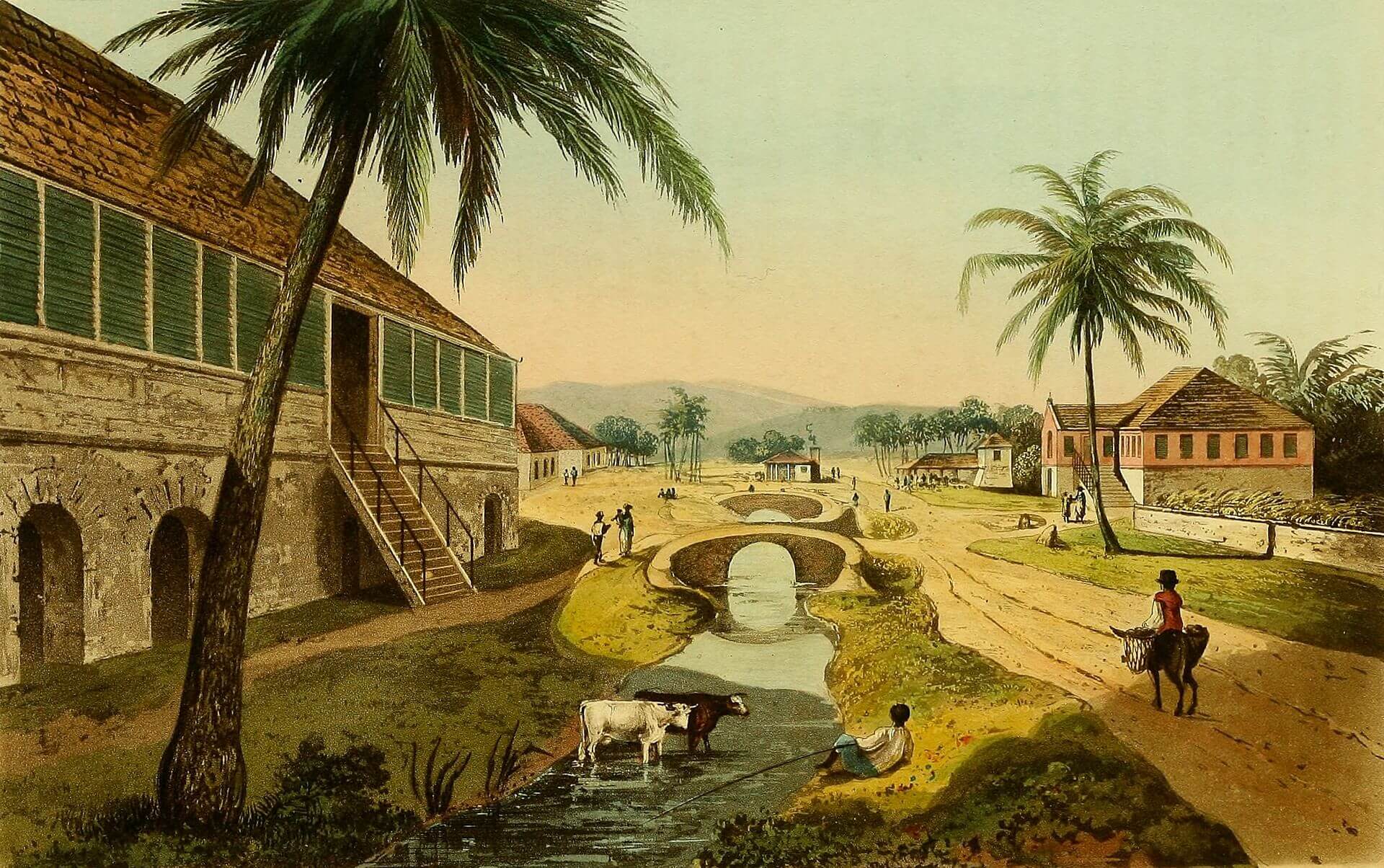
Holland Estate in Thomas in the East, the property of George Watson Taylor, occupies a great portion of the easternmost extremity of the valley of Plantation Garden River. The works are situated on the northern bank of the stream and give employ to upwards of 600 negroes, who are now settled on the sea-shore in a village recently erected at a very great expense.
The family of Taylor was orginally of Norman extraction, and settled in Scotland early in the fourteenth century, acquiring lands at Burrowfield near Montrose. The first we find on record is Robert tailzour, of Tailzourtown who married Mary daughter of Sir Alexanber Strachan, Bart. Approaching our own time, Tailzour, settled in Jamaica and married Martha, daughter of George Taylor, of Camanas in the Island (upon which marriage he assumed the name of Taylor), by whom he had two sons and four daughters.
The view before us presents the approach to the works from the south. On the left is the Barrack, or residence of the book-keepers and other white people attached to the estate, beyond which is the boiling-house and still-house. On the right is the overseer's house, and in the distance upon the hill, is the change-of-air house, for the use of convalescents on the estate.
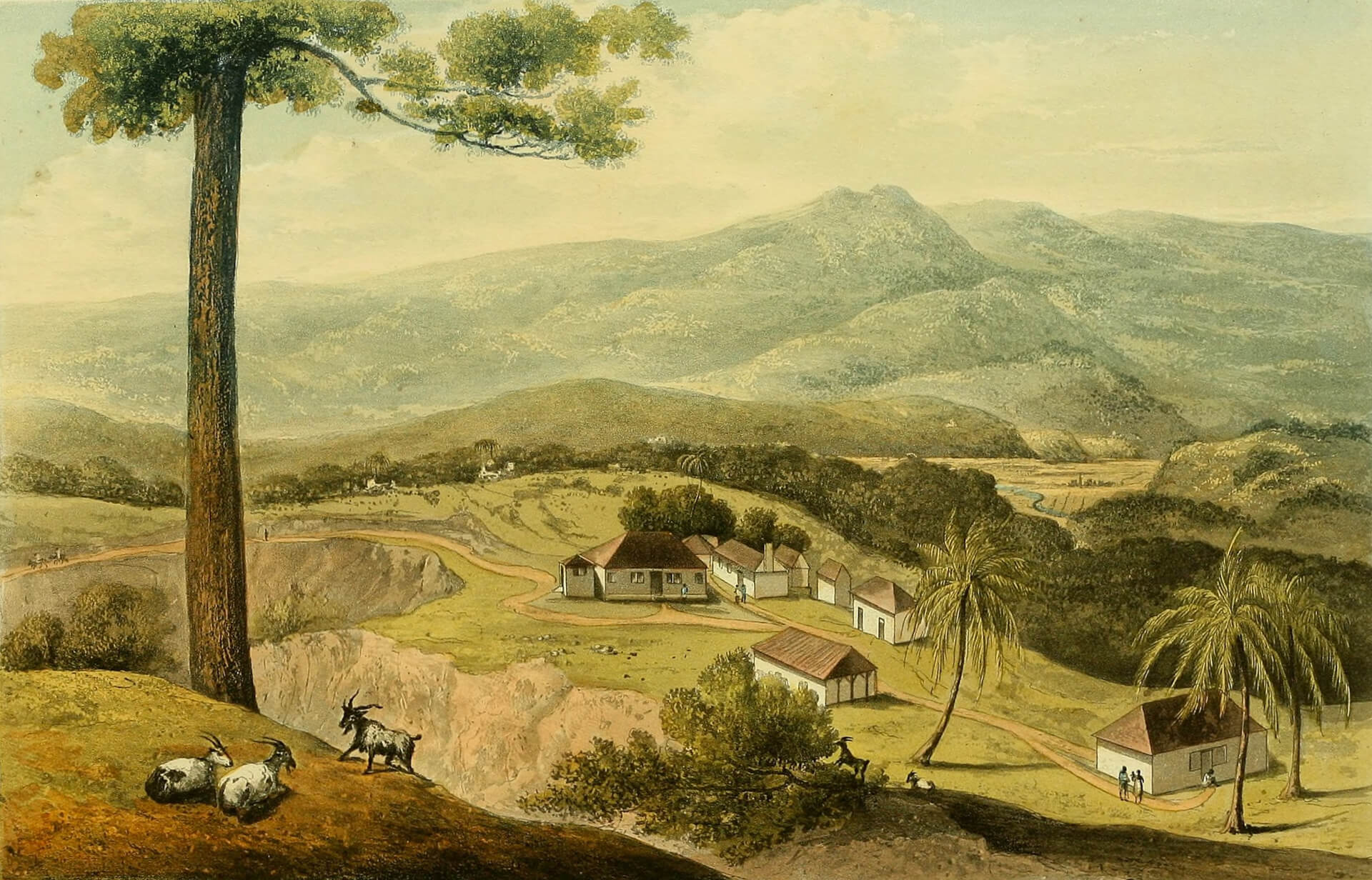
Spring bank was at the time this view was taken, the property of John Steel. It is situated at an immense elevation, about three miles south-westard of Port Antonio, and commands the most extensive and varied landscape scenery. This view which is terminated southerly by some of the highest of the Blue Mountains, includes in the valley along which the Rio Grande has its impetuous course, the Golden Vale and Seaman's Valley estates, with some small portions of Stanton Harcourt and Hope estates.
Golden Vale, about 5 miles in the interior from Port Antonio, contains about 250 acres of level canefield above and below the works and about as much more bottom land, not so convenient for cane. There are on the estates 500 negroes, 50 mules, and 300 head of cattle.
Seaman's Valley is said to derive its name from the destruction of a party of our seamen by the Maroons. It is about 10 miles from Port Antonio, and conatins 1698 acres, of which 187 is canes.
At the head of the Valley is Moor Town, one of the stations of the Maroons. It contains 80 men, 127 women, and 202 children, under the superintendence of George Fuller.

Spring Garden Estate, frequently called Great Spring Garden is one of the properties of John Rock Gossett, to whom it has descended from his great grandfather, the original settler. This plantation is contiguous to the seashore and adjoins the left bank of the Spanish river. The mansion house, or according to local phraseology, the great house, is placed on a rising ground, and judiciously overlooks the works, which are extensive and in the most complete repair, the mill is turned by a well-supplied water-wheel, and the boiling house contains a double and single set of coppers. At th foot of the knoll on which the great house stands, is seen a portion of the negro village. Beyond these the eyes rest on the blue expanse of Buff Bay, closed in by Palmetto point towards the sea, and inland by the portion of a range of the Blue Mountains which runs north and south, or nearly right angles with the principal range, which cross the southward side of the parish
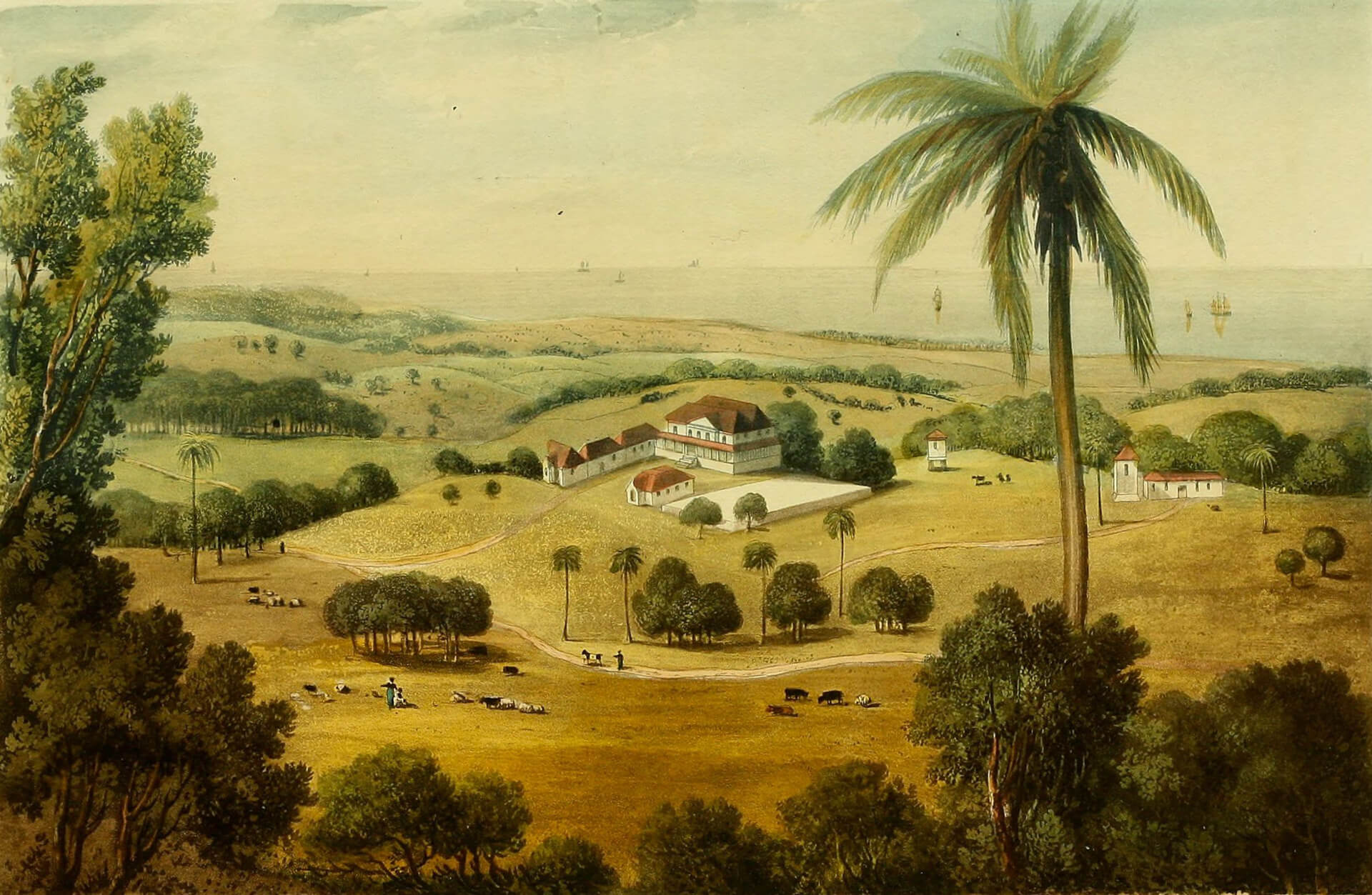
Cardiff Hall, of which we give a view, is situated westward of St Ann's Bay and was the usual residence, when in Jamaica, of John Blagrove, lately deceased.
This estate with others of equal and superior value and extent, was inherited by the late Mr Blagrove from his Father, his ancestors having been settled in the Island from the time of its conquest by Cromwell. The late Mr John Blagrove was born at Cardiff Hall and sent at an early age to England. He received his education at Eton College, from thence he went to Oxford.
At this period, when the whole system of colonial slavery is so grossly misrepresented, it will be an act of justice to state, that Mr Blagrove was always considered by his slaves as a most kind and humane master. They amounted in number to about 1,500. Mr Blagrove has given a legacy in his will, which marks at once his feeling for his slaves. We give his bequest in his own words --
"And lastly, to my loving people, denominated and recognized by law as, and being in fact my slaves in Jamaica, but more estimated and considered by me and my family as tenants for life attached to the soil, I bequeath a dollar for every man, woman, and child, as a small token of my regard for their faithful and affectionate service and willing labours to myself and family, being reciprocally bound in one general tie of master and servant in a prosperity of the land, from which we draw on mutual comforts and subsistence in our several relations (a tie and interest not practiced on by the hired labourer of the day in the United Kingdom), the contrary of which doctrine is held only by the visionists of the puritanical order against the common feeling of mankind."
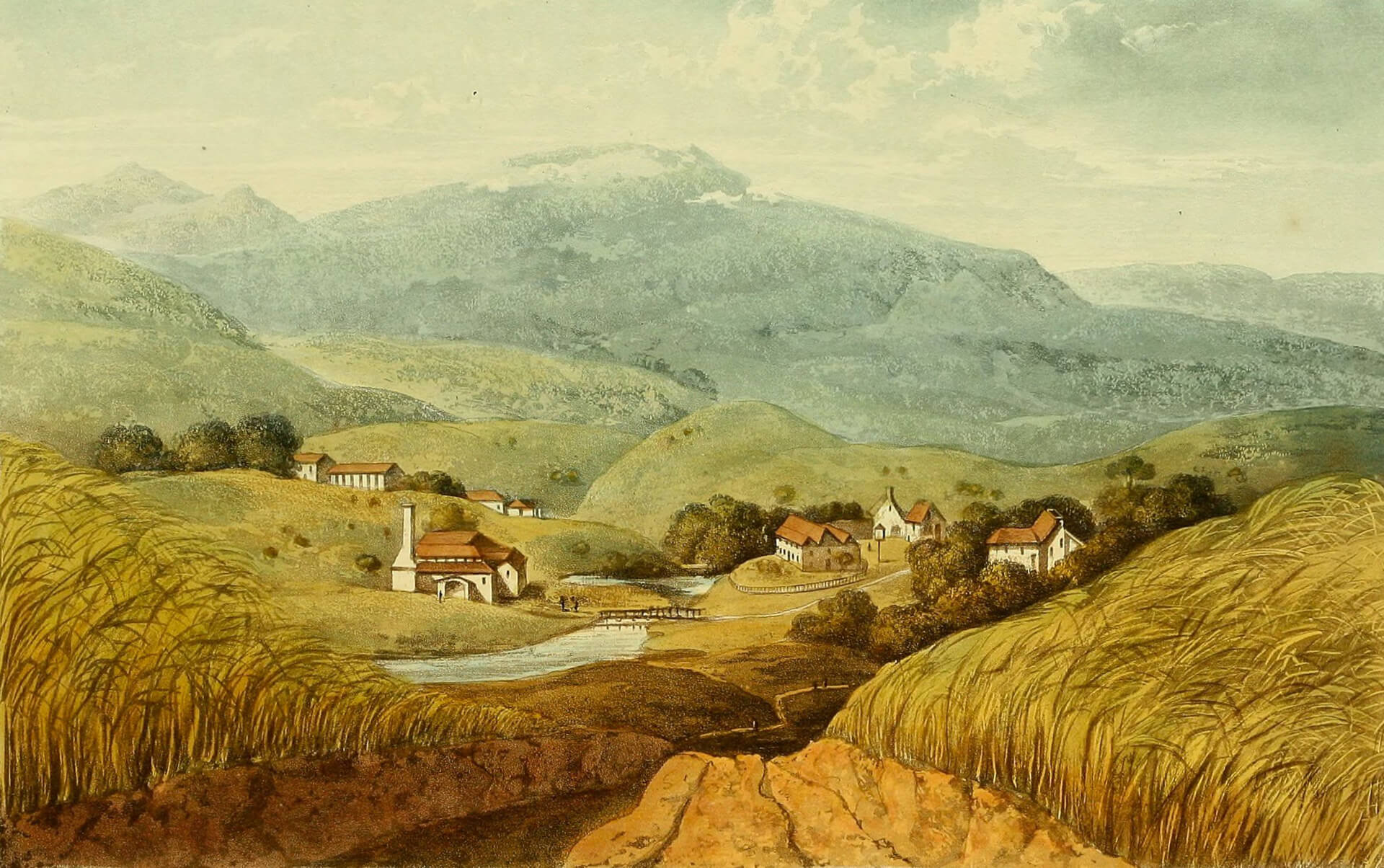
Williamsfield Estate, in the parish of St Thomas in the Vale, according to what can be gathered from the old negroes (there being no early records), was first settled nearly 80 years ago by Mr. Needham, who was at that time a large proprietor in the Island, but while in its infancy (within three or four years after it was commenced), it was purchased by Mr. Harvey, who came from Barbados, and was a merchant in Kingston. From Mr. Harvey it became the property of Daniel Lascelles, brother of the first Baron Harewood, from whom it descended to the present Earl. It contains 2,998 acres of land including Sandy Gut, a small estate which was purchased and added to it in 1815. Something more than 300 acres of this in canes.
There are 304 negroes (negroes and people of colour) on the estate. The nearest shipping-places to which a wagon can go, are Port Henderson and Passage Fort, both of which are 23 or 24 miles distant. The principal road across the island from Spanish town to St Mary's, passes through the estate. Nightingale Grove, in St Dorothy's, is likewise a property of the Earl of Harewood. At the time of its purchase, by Mr Daniel Lascelles, is was a penn, but was soon converted into a sugar estate.
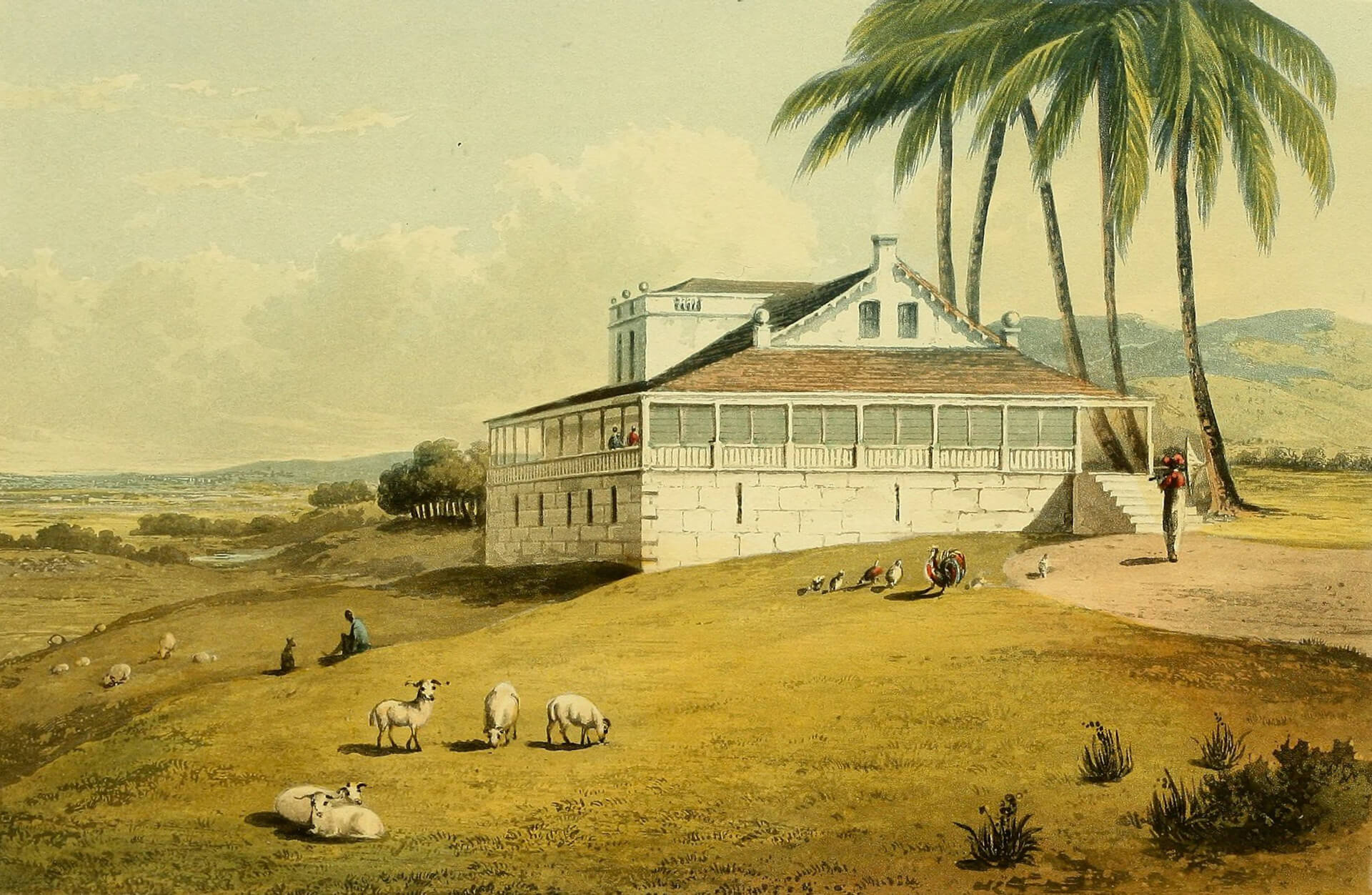
Bryan Castle Estate was settled in 1793 by Bryan Edwards and afterwards became by purchase, the property of late Alexander Donaldson, and is now in the possession of Alexander Grant, John Meek and Joseph Green, trustees nominated by his will. The property contains 1402 acres of land, 300 of which are in canes, 600 in pasture and pimento and the remainder in negro and provision grounds. On the estate are 165 negroes, the extra labour being made up by jobbing. The estate is pleasantly situated within three miles of Rio Bueno, the nearest shipping port, to which there is a good road, it is like the generality of sea-side estates, subject to frequent droughts, but in good seasons is very productive.
Bryan Edwards, the very able and accurate histororian and of the West Indies was born May 20, 1743, at Westbury, Wiltshire.
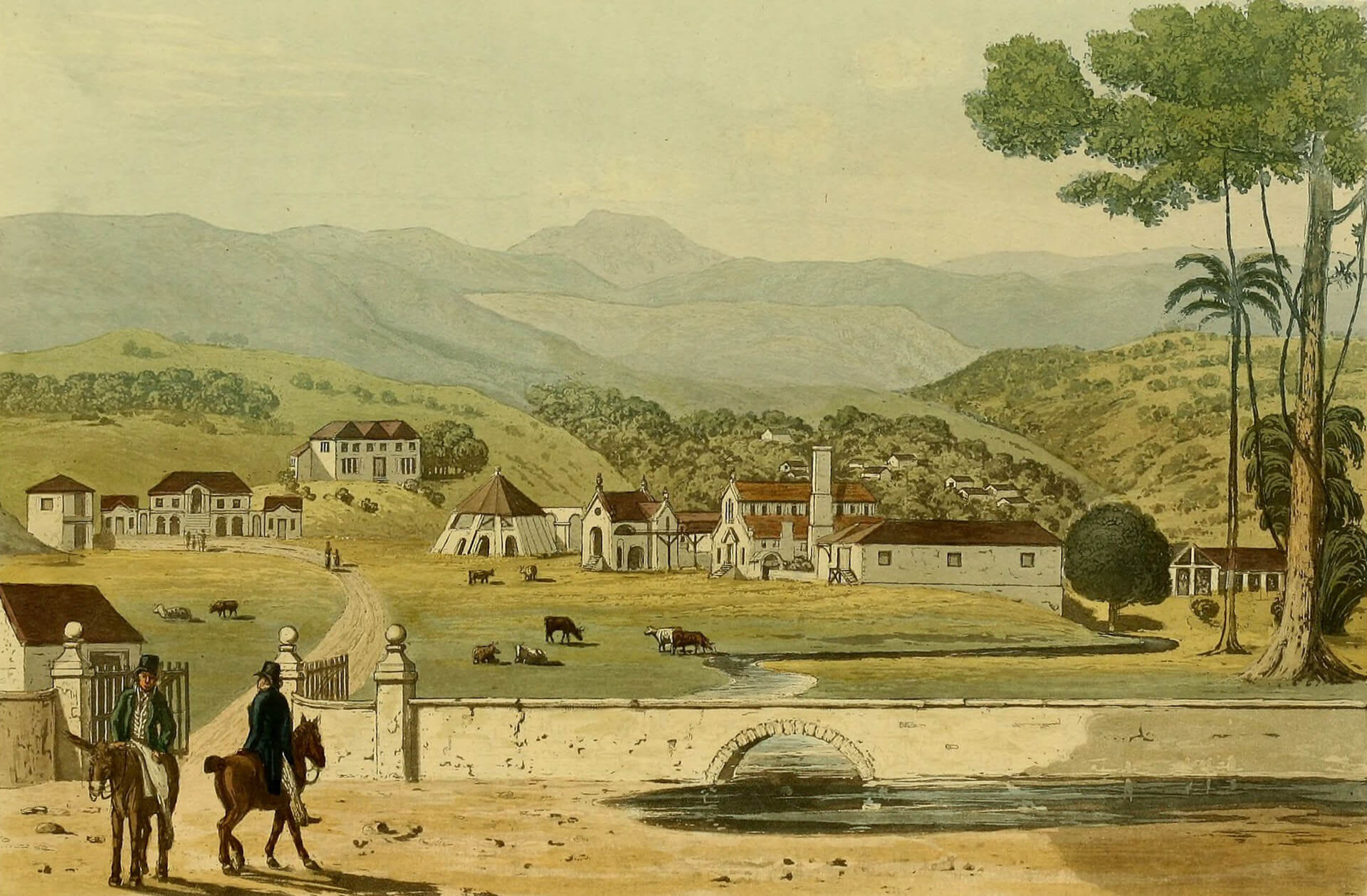
Montpelier Estates, the property of Charles Ellis, situated in the parish of St James about ten miles from Montego Bay. They are part of a tract of land of about 10,000 acres, which stretches across the valley of the great river from the hills on either side, and is divided by that river into two portions, of which about 8,000 acres are in the parish of St James and about 2,000 in the parish of Hanover.
The family of Ellis have been settled in Jamaica from the time of its conquest, and possess large properties in other parts of the island. Mr John Ellis, the elder brother of the proprietor of Montpelier, being owner of Green Castle, Newry and Nutfield Estates, in the parish of St Mary and of a penn in the adjoining parish of St George, called Fort George, and also jointly with Mr C Ellis of an estate and penn (called Caymanas and the Crawle), which are situated on the road from Spanish Town to Kingston near Ferry.
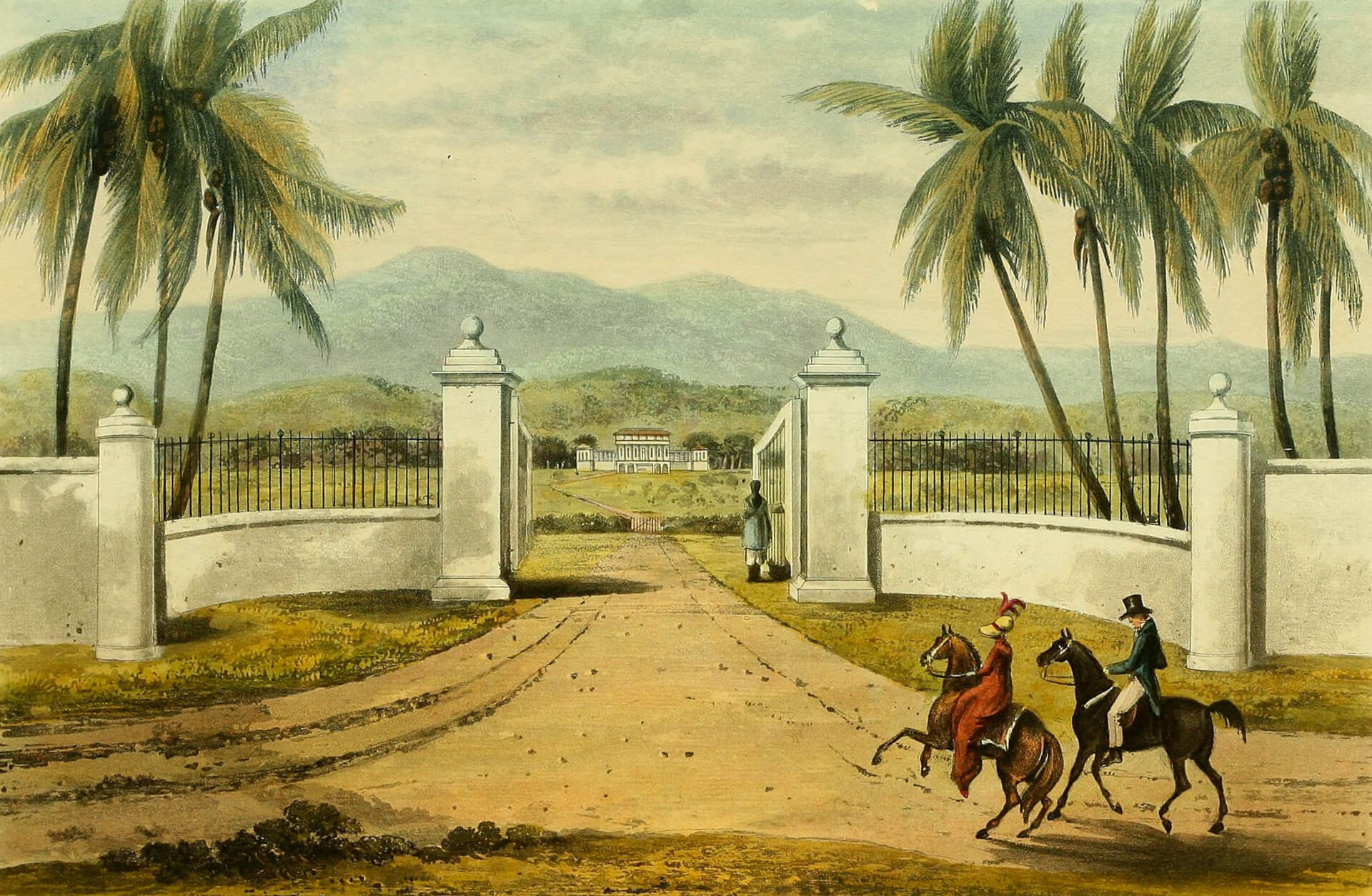
Rose Hall, the property in residence of John Rose Palmer, is situated on the sea-side, at nearly equal distance from Montego Bay and Falmouth. The house of which we give a view is justly considered as the best in Jamaica, and was erected about 50 years since by the uncle of the present proprietor, at the expense of £30,000 sterling. It is placed at a delightful elevation, and commands a very extensive sea view. Its general appearance has much of the character of a handsome Italian villa.
The estate and the adjoining one of Palmyra, descended to the present proprietor from his great uncle. Rose-Hall estate has about 200 acres in canes, about the same quantity in grass, and about 250 in ruinate; the Negro grounds are on Palmyra estate, which is a more seasonable situation. Palmyra contains about 1,250 acres. The produce is shipped at a wharf at about two miles and a half distance. On the two estates are 252 negroes, and 276 head of cattle.
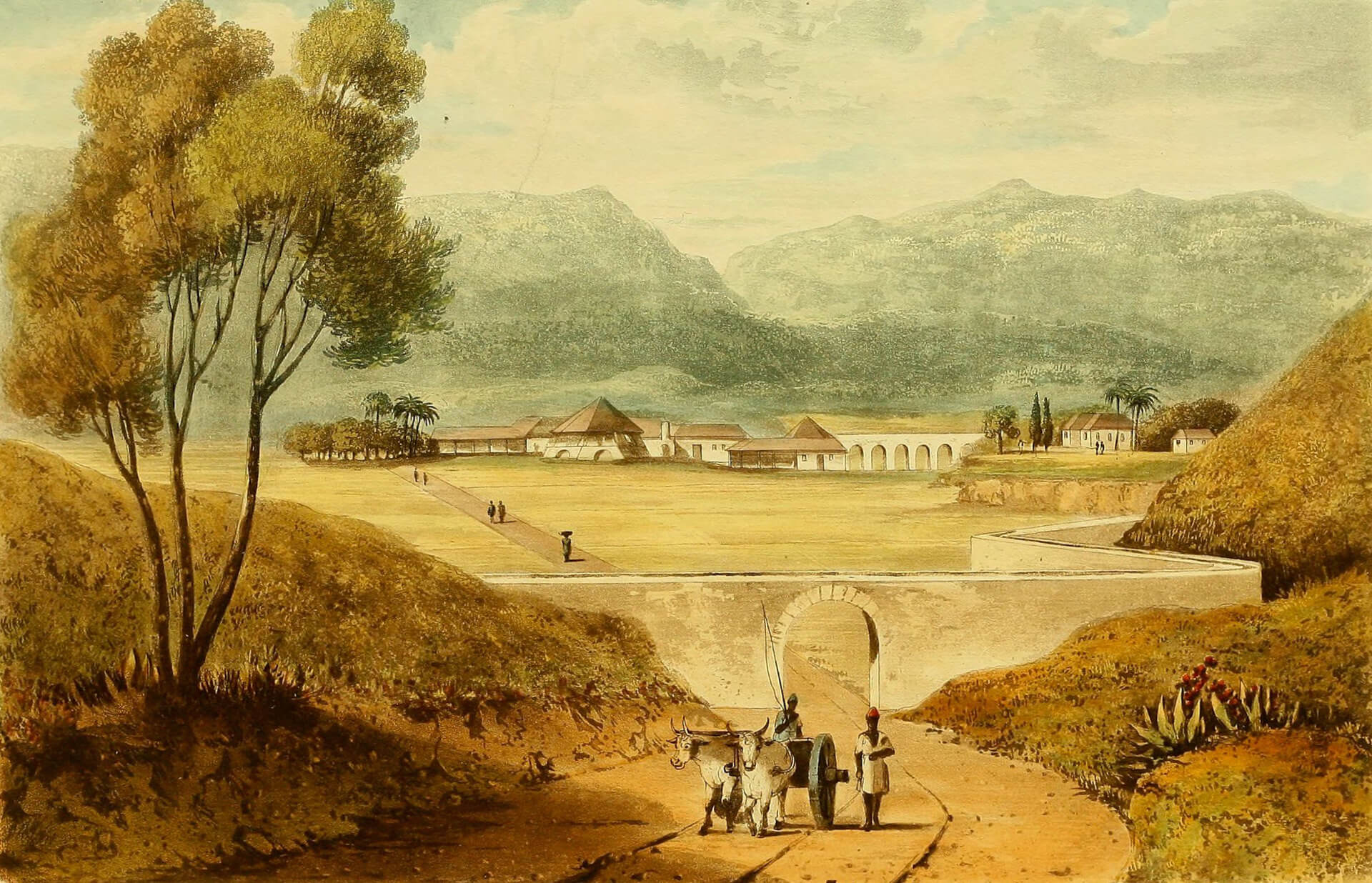
Whitney Estate, the property of Viscount Dudley and Ward, is situated on the great interior road which connects , St Elizabeth with St Dorothy's, at the distance of about 35 miles from Spanish Town. It contains 3,243 acres; of which 160 are in canes, 2,902 in provision and wood land, 151 in pasturage, and 22 in corn. The average crops are 250 hogsheads, and the number of negroes 271. The produce is shipped at Milk River, nearly 15 miles from the estates, but this distance is relieved by Rhymesbury Penn, a portion of the same property.
Long in his history of Jamaica published in 1774 speaking of this estate, says, "The plantation called Carvers (now Whitney) is one of the most celebrated for its fertility. It is a small dale surrounded with rocky hills, and so rich that it produces invariably 300 hogsheads of sugar per annum, with so little labour upon it, that they (the negroes) multiply sufficiently to keep up their stock, without having recourse to African recruits". The Plate before us gives the general view of the Estate in approaching it from the South. The road is crossed by the aqueduct, which conveys the water to the mill, and its course may be traced along the side of the hill to the works.

Trinity, Tryall, Brimmer Hall and Roslyn are contiguous Estates occupying between 4 and 5,000 acres of land, in the immediate vicinity of Port Maria and from their consequence give the name of Bayly's Vale to the district in which they are situated. The richnesss of the land, adapted for the most part to the cultivation of sugar, the easy approach to a shipping place, the general healthiness of the spot and excellent provision grounds for the Negroes, render this one of the most desirable properties in the island, more especially as the crops are seldom known to fail from that grievous calamity a protracted drought. The returns are annually from 1,000 to 1100 hogsheads of sugar; in 1815 they reached 1,450. The number of Negroes is little short of 1,100. The annexed View embraces the works of the Estate, with its aqueduct for the supply of the water-mill, at once an object of utility and ornament, erected at a vast expense by the father of the present proprietor, and completed in 1797. In the distance are seen the works of Brimmer Hall, with the Overseer's House on the eminence. Mr Balyly's Estate are in the charge of Henry Cox, of Industry.